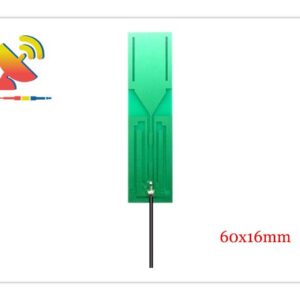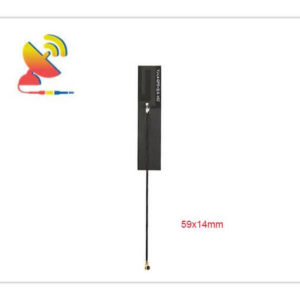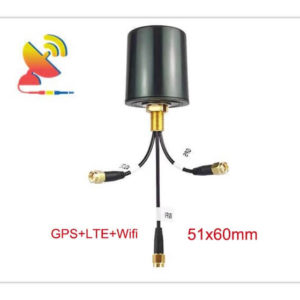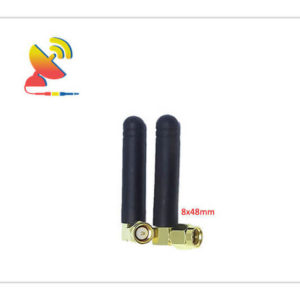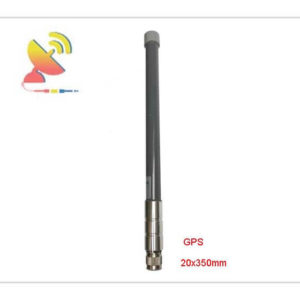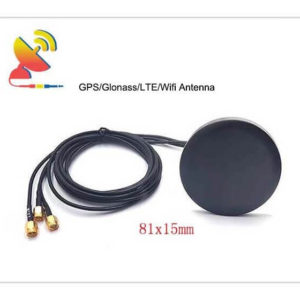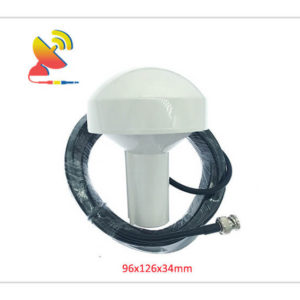GNSS Antenna
GNSS Antenna Manufacturer
C&T RF Antennas Inc is the internal & external GNSS antennas manufacturer, indoor & outdoor GNSS antennas supplier in China.
What is GNSS?
Global Navigation Satellite System (GNSS) refers to a constellation of satellites providing signals from space that transmit positioning and timing data to GNSS receivers. The receivers then use this data to determine location. By definition, GNSS provides global coverage.
GNSS positioning uses a set of observations such as pseudo-range of satellites, ephemeris, satellite launch time, and must also know the user clock difference.
GNSS is space-based radio navigation and positioning system capable of providing users with all-weather, 3-dimensional coordinate and velocity and time information anywhere on the Earth’s surface or in near-Earth space.
Therefore, if you want to know the altitude in addition to the latitude and longitude, then you must receive 4 satellites in order to position yourself accurately.
What is a GNSS system?
GPS
GPS is a radio navigation and positioning system developed on the basis of the US Navy Navigation Satellite System. It has all-purpose, global, all-weather, continuous, and real-time navigation, positioning, and timing capabilities, providing users with precise three-dimensional coordinates, velocity, and time.
GLONASS
GLONASS is a second-generation military satellite navigation system independently developed and controlled by the former Soviet Ministry of Defence, which is the second global satellite navigation system after GPS.
GALILEO
Galileo is a global satellite navigation and positioning system developed and established by the European Union. The plan was announced by the European Commission in February 1992 and is shared with ESA.
Beidou Satellite Navigation System (BDS)
Beidou Satellite Navigation System (BDS) is a global satellite navigation system developed and operated independently by China. The system is divided into two generations, namely Beidou I and Beidou II systems.
China decided to build the Beidou system in the 1980s, and in 2003, the Beidou satellite navigation verification system was completed. The system consists of four geosynchronous orbiting satellites, a ground control section, and a user terminal.
Top-quality GNSS antennas for optimal positioning performance. Maximize your GNSS receiver’s positioning performance with the optimal GPS or GNSS antenna for your application.
GNSS Key Benefits
Multi-constellation, multi-frequency receiving all available and future signals of GPS, Galileo, GLONASS, BeiDou, QZSS, and NavIC.
Buying Guide for the GNSS antenna
Gain: What are the dBi of the GNSS antennas?
1dBi to 28dBi high gain antennas.
VSWR: What is the VSWR of the GNSS antennas?
≤1.5 for single-band frequencies, ≤2.0 for dual-band frequencies, and ≤3.0 for multi-band frequencies
Impedance: What is the impedance of the GNSS antennas?
50 Ω.
Frequency: What are the frequencies of the GNSS antennas?
The frequencies include 1176.45 MHz, 1202.025MHz, 1246MHz, 1268.52MHz, 1561MHz, 1575.42 MHz, 1602 MHz, etc.
Direction: What are the directions of the GNSS antennas?
Omnidirectional.
Polarization: What is the polarization of the GNSS antennas?
RHCP polarization.
Price: How much do the GNSS antennas cost?
Based on different GNSS antenna models.
Antenna Type: What are the types of GNSS antennas?
Passive & Active antenna
Cable Type: What are the cable types of the GNSS antennas?
RG Cable.
Connector: What are the connectors of the GNSS antennas?
Ipex, UFL, MHF, SMA, BNC, TNC, N-type, etc.
Size: What are the sizes of the GNSS antennas?
The different GNSS antenna has different size.
Material: What are the materials of the GNSS antennas?
Plastic, Magnetic, Glass fiber, PCB, Flexible PCB, Copper coil, etc.
Weight: What are the weights of the GNSS antennas?
Based on different GNSS antenna models has different weights.
Color: What are the colors of the GNSS antennas?
Grey, black, white, green.
Operation Temperature: What is the operating temperature of the GNSS antennas?
-40˚C ~ +85˚C.
Storage Temperature: What is the storage temperature of the GNSS antennas?
-40˚C ~ +80˚C.
Safety Emission: What is the safety emission of the GNSS antennas?
RoHS/CE Compliant.
Features: What special features does the GNSS antenna have?
Low-Profile, Low V.S.W.R, Low Loss, High Gain, High Efficiency, High Sensitivity, UV-Proof Water Proof, Sturdy, Durable, Good Impact Resistance, Full Day Working, Optimized Dimensions, etc
Mounting Method: What are the mounting methods of the GNSS antennas?
Screw-mounted, Terminal mount, Based mount, Pole mount, etc.
Application: What are the applications of the GNSS antennas?
Criticality of GNSS Applications.
Location Based Services.
Civil Applications.
Surveying, Mapping, and GIS.
GNSS-based Products.
Space Applications.
Scientific Applications.
Military Applications.
Autonomous Applications.
Other Applications
C&T RF Antennas Inc provides a wide range of high-precision GNSS antenna options.
C&T RF Antennas Inc manufactures the RF antenna with wifi 2.4G, wifi 5.8G, Lora 433MHz, Lora 868MHz, Lora 915MHz, ISM, GPS, NB-IoT, GSM, 4G LTE, 5G NR, 6G, etc. They are used in Wi-Fi And Bluetooth industries, IoT And M2M industries, LoRa And ISM applications, and GPS And GNSS applications.
C&T RF Antennas Inc manufactured the RF antennas including the Through-hole Mount Antennas, Magnetic Mount Antennas, Rubber Duck Antennas, Fiberglass Antennas, PCB Antennas, FPC Antennas, Spring Antennas with cellular antennas, Wifi antennas, Lora antennas, GNSS antennas, and combination antennas.
C&T RF Antennas Inc is the passive GNSS Antenna supplier and active GNSS Antenna manufacturer in China.
Contact us for more information on the GNSS Antenna such as the GNSS antenna datasheet, GNSS antenna pricing, GNSS antenna inventory, etc.
Showing 1–16 of 52 results








